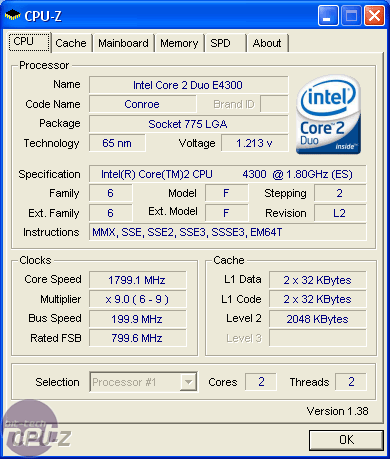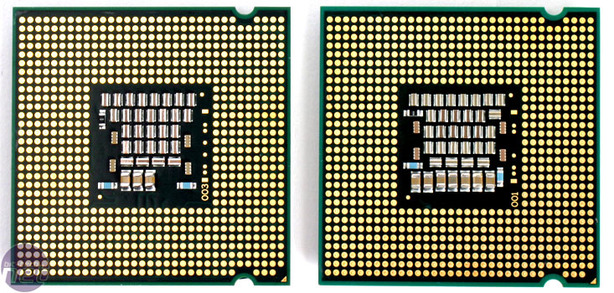Allendale is here!
While the E4300 is the slowest chip in Intel’s line-up at the present moment, there is a slower E4000-series chip scheduled to arrive sometime in the second quarter, but no details on pricing or launch time frame have been revealed. It’ll be known as the E4200 and will have a 1.60GHz core clock along with carrying the same set of features as both the E4300 and E4400.The Allendale core is essentially a cut down version of Conroe with less physical L2 cache and no support for Intel’s Virtualisation Technology. The transistors saved as a result of removing support for Virtualisation Technology and less physical L2 cache should reduce the cost of making the E4000-series CPUs in comparison to the costs of producing a similarly specified Conroe E6000-series processor. Conroe’s L2 cache takes up around 40-45% of the total surface area; docking half of that will mean that Allendale’s cost of manufacture should be about 20-25% less than Conroe on a per-chip basis.
Although we estimate that the die size has been reduced by around 20-25%, Intel’s TDP specification for the Core 2 Duo E4300 remains the same as Intel’s other Core 2 Duo processors at 65W (typical). Everything else inside Allendale remains intact, meaning that the chip supports all of the latest technology, including MMX, SSE, SSE2, SSE3, SSE4, Enhanced Intel SpeedStep Technology, Execute Disable Bit, EM64T, C1E (Enhanced Halt State) and Intel Thermal Monitor 2.

CPU-Z incorrectly reports our Core 2 Duo E4300 as a Conroe
Physical Differences:


Core 2 Duo E4300 / Core 2 Duo E6300

MSI MPG Velox 100R Chassis Review
October 14 2021 | 15:04









Want to comment? Please log in.